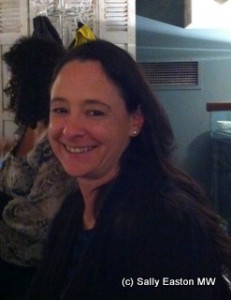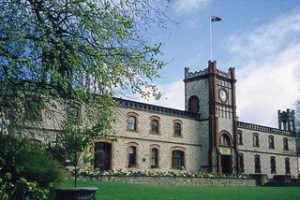Louisa Rose on viognier

Louisa Rose
Yalumba planted 1.2 hectares of viognier in 1980. By the time winemaker Louisa Rose, now head of winemaking for Yalumba and Hill Smith Family Vineyards, arrived to do her first Yalumba vintage in 1992, the vines had settled down and were entering an interesting age, and Yalumba had had some early experience with the variety up ’til then. Rose took the variety to heart and has become an acknowledged expert, and one all too willing to share her passion.
In the early days, viognier was made “like we made riesling and semillon – picked early, about 12 to 12.5% [potential alcohol], kept cold and filtered off solids, inoculated with yeasts, and with a cool fermentation over a long time,” all of which resulted in the viognier having little flavour or life. They were “hard, unattractive, angular and without grace”, Rose said, though “this [winemaking approach] still works beautifully with riesling and semillon.”
Viognier is a particular grape variety, peachy-perfumed, and with thick skin that give a lot of natural phenolics which form part of the texture of a wine. Viognier is not particularly high in acidity, so managing those phenolics so they add texture and freshness rather than astringency or bitterness is just one of the skilful bits of Rose’s job.
After a visit to the Rhône in 1995, Rose was hooked on this individual grape variety. Unusually for the traditional squeaky-clean, belts and braces, risk-averse Aussie winemaking style of the time, she was already starting to work with indigenous yeast, and reducing the amount of sulphur dioxide being used. She had a couple of barrels of viognier “to muck about with”, more in thinking with how white Burgundies are made.
A big revelation came in the vineyard, she said: “we let them get riper, and discovered that at higher sugar levels they got these flavours which come in very quickly, yet much later than other white varieties.” Added to which, Rose said “grapes that were in the sun were getting golden in the sun, and had much more flavour than those inside the canopy.” Yalumba learned that sun exposure was key to flavour development for viognier. Until that point sun exposure was usually avoided for white cultivars in Australia, as cooler fruit retains more of its inherent aromatics.
Hand in hand with flavoursome, ripe viognier fruit came changes in winemaking. Firstly, reducing the sulphur dioxide additions to the juice allowed the grape phenolics to precipitate out in the press. With the previous “riesling-style” winemaking process, Rose found viognier’s naturally higher levels of phenolics risked browning in the bottle in a premature oxidation process.
This was not enough difference. The piece de resistance, Rose said “was wild yeast” even though using them is a much riskier strategy. “Through research with the AWRI and the University of Adelaide, we were starting to understand what happens with yeast in the wine, and how many different yeast are in the soup.” She went on “it seems to be those [non-saccharomyces] yeasts in the first few days that give texture, richness, suppleness. Then saccharomyces yeast [give] more fruit flavours.” After the fermentation, Rose said those early aromas and textures come back again.

Yalumba
Letting the indigenous yeast do their thing wasn’t the only risk. Letting them do their thing can mean it takes up to a week to kick off the fermentation. Added to which the juice was being left at an ambient temperature of around 15°C. All these things were anathema to the Aussie winemaking norm in 1994 and 1995 when Rose first started mucking about with her couple of barrels.
Added to which those barrels that contained indigenous yeast had better integrated alcohol (though not any less alcohol), than barrels containing cultured yeast. Rose said the new oak integration was also better with indigenous yeast, not that Yalumba use new oak any more with their viogniers.
Within a couple of years they had changed all viognier winemaking, [apart from the botrytis style] to indigenous yeast because, Rose said “the wines had better colour, paler and with more greens, and over time they aged more slowly.”
So how does Rose describe the essence of ‘classic’ Aussie viognier, given that she probably makes most of it? That would be the Eden Valley she said – “it starts with texture, suppleness, a palate that’s fresh but not high in acid, with balance from phenolics. Stone fruits are apricot-based, fresh apricots, some white peach, also with ginger and star anise.”
Tasting notes, London, September 2012
Yalumba, Viognier 2011, South Australia
Peachy, apricot, perfumed nose. Hint of phenolic edge on sides of palate which doesn’t detract. Palate is less aromatic than the nose, with a savoury note mid palate and attractive medium to full body.
Yalumba, Y Series Viognier 2012, South Australia
Dry-honeyed floral note, almost rose petal. Pure and fruit-focused, without the savoury note of the straight viognier. Clean and pure with sweet core. Feel the 14.5% alcohol as a warm spiciness. Appealing wine.
Yalumba, Viognier 2010, Eden Valley
This is what Rose thinks viognier is about. Extended time on lees, and in 4-10 year old French oak barrique for 10-11 months.
Definitely moving into a different class of wine. Elegant, floral perfumed. Lifted aromatics, intense and linear on the nose. Plush and fresh palate attack, with real class and refinement. Freshness, and floral blossom with apricot fruits. Pure, somehow a little elusive and teasing, with faint hints of structural phenolics giving linearity and freshness. Medium weighted with deep intensity. Long and tasty.
Yalumba, The Virgilius 2009, Viognier, Eden valley
Rose: “I’m looking not for such obvious fruit as what goes into Eden Valley, but more texture, flinty, gunpowder aromas, and a sense that the wine has some restraint and will evolve over time. I want a powerful wine with restraint that will open and evolve over a meal. This is for people who want to think about a wine with their meal.”
Warm, nutmeg spice with fresh and dry-baked apricot with allspice complexity. Alcohol of 14.5% only vaguely present. Serious stuff this, plenty of freshness without great acidity, and with great weight and volume of fruit. Vg.
Yalumba, FSW 8B, Botrytis Viognier 2011, Wrattonbully
Less than romantically meaning fine sweet wine, batch 8B.
Natural botrytis, coming in on the fog that arises as a result of the ocean, some 50-60km distant. 11.5%, ~180g/l RS, ~7g/l TA.
Richly perfumed, apricot and tangerine, plush, velvety. Remarkable freshness, totally not cloying at all, given its modest acidity. Medium weight, with stone fruits and very long finish. Vg.



